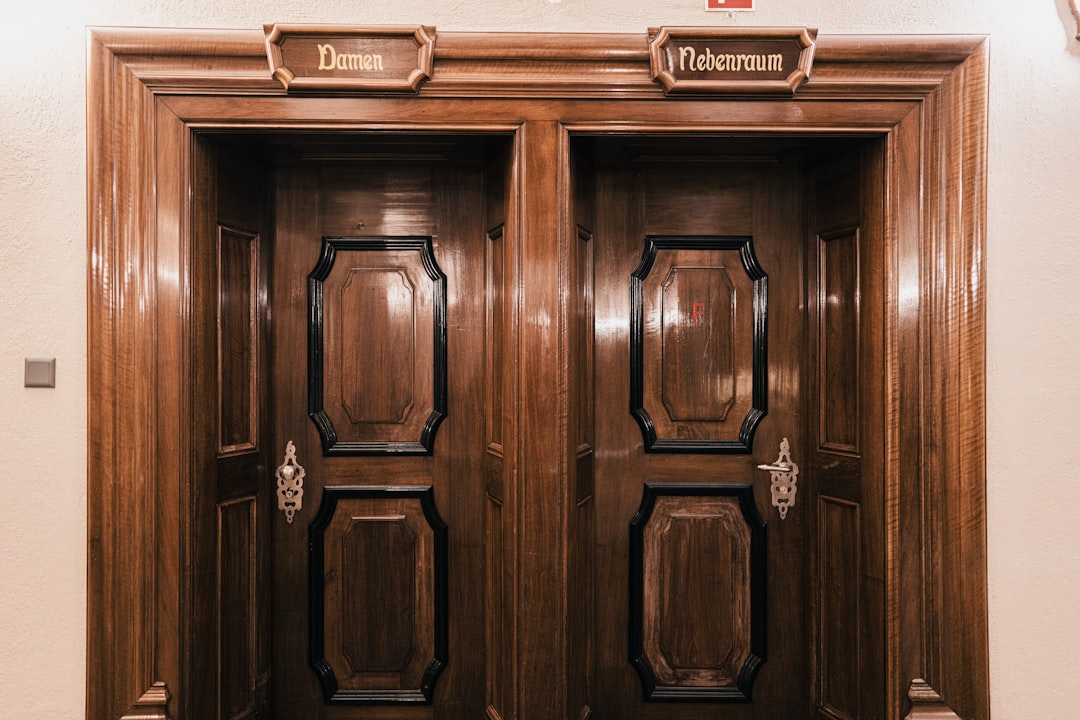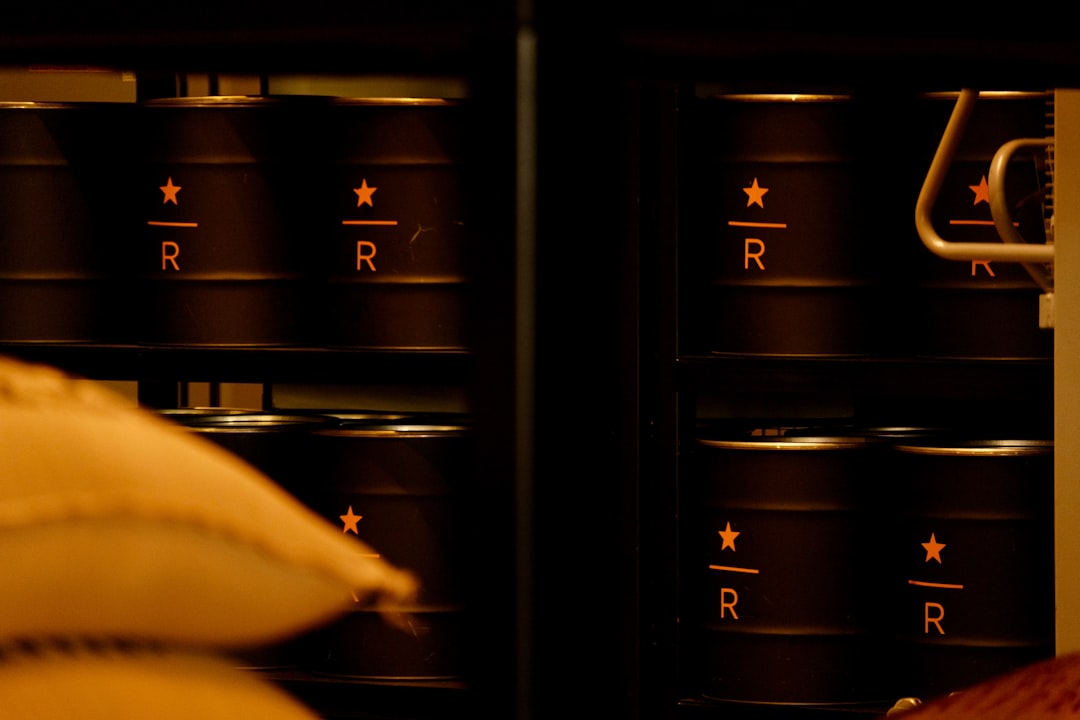

Engage prospects with a scan and streamline customer engagement with FREE QR code marketing tools by Sona – no strings attached!
Create a Free QR CodeFree consultation

No commitment

Engage prospects with a scan and streamline customer engagement with FREE QR code marketing tools by Sona – no strings attached!
Create a Free QR CodeFree consultation

No commitment
Cabinet refacing services are experiencing a surge in demand as homeowners seek affordable and impactful ways to refresh kitchens and bathrooms without the expense and disruption of a full renovation. Yet this rising interest introduces a new challenge for providers: capturing high-value leads when many prospects research quietly and compare options without ever filling out a form or calling. The traditional mix of brochures, yard signs, and home show booths often creates interest that remains invisible to the CRM, which means prospects can slip over to a competitor before you know they exist.
QR codes solve this problem by turning every physical touchpoint into a digital entry point for engagement and conversion. A single scan can open a cost calculator, a scheduling form, or a gallery of before-and-after projects. That scan can also be tracked and tied to a particular campaign or location to reveal which offline moments drive action. By meeting homeowners exactly where curiosity strikes and giving them a frictionless next step, QR codes shorten the distance between intent and conversion.
This guide explores how marketers and decision-makers in the cabinet refacing space can use QR codes to minimize untracked interest, capture leads before competitors do, surface review and upsell opportunities, and attribute revenue to offline campaigns. The goal is to help more cabinet refacing professionals turn every campaign, event, and home visit into a measurable growth channel, supported by tools like Sona QR’s product overview and Sona for creation, tracking, and revenue attribution.

Digital transformation is rapidly changing how cabinet refacing services connect with homeowners. A common challenge is losing high-value prospects who engage with a brochure, attend a home show, or receive a direct mail offer without ever getting tracked in the CRM. Using qr codes in marketing in these moments helps businesses close the loop, connecting offline curiosity with digital engagement for more reliable lead capture. Replacing analog processes such as paper sign-up sheets or handwritten appointment cards with QR-enabled experiences turns every interaction into a measurable event and reduces the manual errors that slow follow-up.
Align QR codes with the actions that move your business forward. If you want more consultations, route scans to an instant scheduling page with available time slots and a short intake form. If you want to educate and qualify, route to a gallery filtered by finish or door style and capture preferences for future nurturing. If you need reviews and referrals, route to reputation platforms right after project completion, then offer a maintenance checklist or loyalty perk to encourage repeat business and word of mouth.
Platforms that automate code creation, attribution, and CRM enrichment ensure valuable customer interactions translate into measurable conversions. Sona QR lets you build dynamic codes, update destinations without reprinting, and see real-time scan analytics by campaign, location, and device. Combined with Sona.com, you can tie scans to pipeline and revenue, so your offline investments are fully accountable.

Competition in cabinet refacing is fierce, and traditional marketing often fails to make high-intent interest visible or actionable. Homeowners notice project signs, van wraps, and event displays, yet without an easy digital handoff, many research quietly and convert elsewhere. QR codes remove the guesswork and offer an immediate, trackable next step that matches the homeowner’s moment of curiosity.
This technology also reduces operational friction. Teams can eliminate paper-based signups and manual transcription errors, which speeds up outreach and improves lead quality. A well-placed QR code paired with a clear call to action transforms every surface into a self-service portal for quotes, materials education, or scheduling, while giving marketers the data they need to optimize placements and messages.
Matching the right QR code format to each customer touchpoint helps capture intent accurately and streamline the next step. Cabinet refacing involves multiple decision makers and stages, from initial inspiration to post-installation follow-up. Formats should support each stage with minimal friction and clear outcomes.
Dynamic QR codes are especially valuable because they allow you to update links without reprinting materials. For example, a showroom display can switch from a summer promotion to a fall offer, or a direct mailer can be retargeted from a lead form to a last-chance discount as deadlines approach. Static codes work well for evergreen needs like a brand homepage or warranty registration page.

Growth stalls when businesses cannot connect offline interactions to online action or when lead information is delayed and incomplete. Strategic QR code placement turns passive interest into trackable engagement, shows which environments deliver qualified demand, and helps teams prioritize follow-up based on real behavior.
Think through the physical journey of your buyers. They encounter your brand in multiple places: a postcard in the mail, a neighbor’s lawn sign after a successful installation, a booth at a local home show, or a display at a big-box retail partner. Each moment is a chance to prompt a scan that captures intent and moves the process forward.

QR codes should always align with clear business outcomes: more consultations, faster quotes, stronger reviews, and larger average order values. Align each code with a single, specific action and the content that helps the homeowner take it confidently.
Before deployment, map your key touchpoints and decide how to turn each into a data-rich moment. For example, a direct mailer can route to an estimate form with a limited-time discount, while a showroom display can route to a short lead form that unlocks a longer, high-value style guide and a consult booking link. Keep the journey simple and the promise of value immediate.
Identifying intent signals before a form fill is a common frustration. Every QR scan is a data point that reveals context, interest level, and timing. By deploying unique codes across your touchpoints and funnel stages, you create an always-on segmentation engine that informs the right follow-up for each homeowner.
Sync scan events with your CRM and ad platforms to trigger nurturing flows. Awareness scans might receive educational emails about refacing vs. replacement and financing options. Consideration scans might be routed to a consult scheduler and retargeted via social ads featuring before-and-after transformations. Post-purchase scans can trigger review requests and loyalty offers.
By syncing scan events to marketing and CRM systems, companies turn anonymous activity into actionable, high-value leads. Sona QR lets you tag each code by stage, channel, and location, then pass tagged data into platforms like HubSpot, Salesforce, and Meta Ads for precise retargeting and sales alerts. For SMS-based follow-up, consider text message QR codes.
The fragmentation of marketing channels makes connecting touchpoints to revenue difficult. QR codes serve as the unifying thread that transforms print and physical placements into trackable digital journeys. They simplify the leap from awareness to action and give you the analytics to compare channels objectively, especially when you integrate QR codes into campaigns holistically.
Cabinet refacing teams often rely on a blend of local outreach, showroom traffic, and community events. Adding QR codes to each touchpoint ensures that curiosity turns into measurable engagement instead of evaporating. Each scan becomes an entry point to your funnel with a source tag that helps you allocate budget toward what works.
Launching successful QR initiatives requires a focused approach. Treat each campaign like a testable asset with a clear goal, a simple user promise, and measurement baked in from the start. The following steps help cabinet refacing teams deliver consistent results across print, showroom, and field operations.
Plan for the physical reality of your placements. Codes on glossy surfaces or kitchen displays may reflect light, and codes on vehicles or yard signs must be larger to remain scannable from a distance. Always add a benefit-driven call to action such as “Scan for instant quote” or “Scan to see finishes” so people know what they will get.
Begin by defining the outcome you want in business terms. Do you want more booked consultations, faster quote requests, a surge in reviews, or a way to qualify interest at events without clipboards and paper? Tie one outcome to each code so the next step is unambiguous.
Clarify success metrics before you print anything. Decide how you will measure scans, form fills, bookings, and eventual revenue impact. Set baselines, then define targets such as a 20 percent increase in consult bookings from showroom traffic or a 15 percent lift in review volume post-installation.
Select between static and dynamic codes based on your needs. Static codes are best for evergreen destinations that will not change. Dynamic codes are best for campaigns where you want detailed analytics, retargeting, or the ability to change destinations without reprinting.
Use a platform such as Sona QR to create, manage, and label codes by campaign, channel, and placement. This ensures you can test, learn, and iterate without reprinting and without losing attribution data.
Design with clarity and contrast. Use sufficient size, quiet zone, and color contrast to maximize scannability. If you include your logo or brand colors, ensure the code remains easy for camera apps to detect.
Run a pilot before a full rollout. Print small batches or use temporary stickers in the showroom to validate scan rates and user flow. Adjust placement, CTA, or destination based on results.
Choose placements based on customer journey stages and scanning context. Match the promise of the code to the moment a homeowner is experiencing.
Coordinate with staff. Train designers, sales reps, and installers to point out the codes and explain the benefit of scanning. When staff introduce QR as a helpful shortcut, scan rates rise significantly.
Set up tracking and reporting from day one. Tag each code, add UTM parameters to every destination URL, and connect your QR platform to your CRM.
Tools like Sona QR provide a centralized dashboard and integrations that make optimization continuous. Over time, your QR program becomes a compounding asset, with better creative, smarter placements, and higher ROI.
Tying collateral or event investments to revenue is difficult without proper attribution, including first-touch vs last-touch attribution models. Modern QR solutions close this gap by giving you visibility from the moment a scan happens through to the booked appointment and closed deal. You move from guessing which flyers worked to understanding exactly which placements and messages produce profit.
The key is to go beyond raw scan counts. You need to capture context such as location, time, device, and campaign source, then follow the trail through form fills, calendar bookings, CRM progression, and revenue outcomes. When you unify these signals, you can reallocate budget to high-performing channels and retire what does not deliver.
With Sona QR and Sona.com working together, you can centralize scan analytics and connect them to pipeline and revenue. Sona QR captures real-world engagement and passes it to your CRM. Sona.com enriches identities, links scans to known buyers through journey analytics, and attributes influence across multiple touches. The result is a complete, data-driven view of how QR engagement contributes to demand generation and sales efficiency.
Building a durable QR program is about more than putting codes on paper. It requires clean attribution, thoughtful design, and follow-up that turns scans into conversations. The following best practices emphasize the materials and workflows most common in cabinet refacing.
Focus on placements where your team can reinforce the value of scanning. A designer who points out “Scan here to see this door style in five popular finishes and book a free design visit” will outperform a silent sign every time. Similarly, installers who introduce a “Scan for warranty and referral rewards” card at handoff drive more reviews and upsells.
Creative placements can differentiate your brand. For instance, add a QR code on a removable sticker to sample cabinet fronts in the showroom that opens a short video showing the refacing process. Or include a QR code on toolboxes or protective floor runners during installation that links to a “What to expect today” guide.

Leading cabinet refacing firms are achieving notable results by targeting industry pain points with QR codes. These examples illustrate common goals such as faster appointment booking, higher review volume, and better event performance. They also show how small design choices and clear CTAs can make a meaningful difference in conversion rates.
A regional provider increased booked consultations by 27 percent after adding QR-equipped cost calculators to direct mail campaigns. The postcard promised “Scan for a 60-second estimate,” routing to a mobile form that captured kitchen size, door style preference, and zip code. Scans were tagged by neighborhood and time of day, giving the marketing team new insight into when homeowners were most responsive. Sales used this context to tailor outreach and prioritize evening callbacks for leads that scanned after work hours.
At a two-day home show, another refacing company placed large QR displays on booth walls, staff badges, and sample boards. Each code offered a free design guide and a chance to win a kitchen organization upgrade. The booth collected 300 leads, all of which synced to the CRM with tags for day, time, and interest category. Post-event nurturing included a sequence of project galleries, a financing explainer, and a “Book your in-home consult” nudge within 48 hours. The immediate follow-up kept the company top of mind and improved show-to-appointment conversion by 22 percent.
A third business tripled monthly Google reviews by adding a “Scan to Review and Claim Your Care Kit” QR code to invoices. Scanners landed on a page that first asked a two-question satisfaction check. Satisfied customers were routed to Google for the review, while others were invited to share feedback directly with customer care. The same page offered a referral code and a scheduler for add-ons like soft-close hinges. This approach caught issues early, protected public ratings, and uncovered up-sell opportunities in the week following installation.
Getting the details right determines whether QR codes become a reliable growth channel or a missed opportunity. The most common pitfalls involve placement, clarity, and follow-through. Fortunately, these are easy to avoid with a little planning and field testing.
Design and material choice matter. Codes printed on glossy finishes can suffer glare that reduces scannability, especially under showroom lighting. For vehicles, keep codes large, simple, and high contrast. Always pair the code with a simple, benefit-focused CTA such as “Scan for instant quote” so people know exactly what they will get.
For cabinet refacing service providers, QR codes are now an essential tool for overcoming challenges like missed leads, delayed outreach, and fragmented attribution. Turning each customer interaction, print campaign, and event into a digital opportunity, QR codes bridge key gaps between offline engagement and online follow-through, ensuring all prospects are accounted for and nurtured effectively.
Modern solutions empower cabinet refacing teams to engage homeowners at decisive moments, link every scan to revenue impact, and build measurable, adaptive marketing campaigns. With a platform such as Sona QR for creation, management, and analytics, and Sona.com for identity resolution and multi-touch attribution, you can capture demand at the source, accelerate conversions, and prove ROI across your entire offline-to-online funnel. Start creating QR codes for free.
QR codes have transformed cabinet refacing services from traditional marketing efforts into dynamic, measurable growth opportunities. Whether it’s attracting new clients, enhancing customer engagement during the refacing process, or providing instant access to design options and testimonials, QR codes replace static brochures with interactive, mobile-friendly tools that capture real-time data and drive conversions. Imagine knowing exactly which promotional materials inspire homeowners to schedule consultations—and being able to optimize your campaigns instantly.
With Sona QR, cabinet refacing businesses can create dynamic, trackable QR codes in seconds, update offers without reprinting outdated materials, and connect every scan directly to revenue growth. No more missed leads or guesswork—just smarter, more effective marketing that turns interest into booked projects. Start for free with Sona QR today and transform every scan into a valuable customer connection and a step closer to your next sale.
Cabinet refacing offers an affordable and impactful way to refresh kitchens and bathrooms without the expense and disruption of a full renovation.
The article does not specify exact costs but suggests using QR codes linked to cost calculators to provide instant pricing estimates to homeowners.
While the article focuses on marketing, it mentions that cabinet refacing involves choosing door styles, finishes, and hardware, with options to view galleries and request consultations through QR codes.
The article does not provide specific timelines for cabinet refacing projects.
The article does not list companies but recommends using QR code marketing and local touchpoints like showrooms and home shows to connect with nearby cabinet refacing providers.
QR codes turn physical touchpoints into digital entry points that capture leads instantly, reduce manual errors, and provide trackable engagement linked to campaigns and locations.
Dynamic QR codes are best for campaigns needing updated content and analytics, while static QR codes work well for evergreen pages like brand homepages or warranty registration.
Effective placements include showroom displays, direct mailers, in-home consultation materials, post-project invoices, home improvement events, yard signs, and vehicle wraps.
They provide detailed analytics on scans by campaign, location, and device, link scans to CRM data, and connect offline marketing efforts to booked appointments and revenue.
Best practices include assigning unique codes per asset, adding UTM parameters for accurate tracking, automating follow-up after scans, training staff to promote scanning, and designing codes for clarity and scannability.
By placing QR codes on invoices, warranty documents, and leave-behinds that link to review platforms and offer referral incentives and upsell scheduling options.
Showrooms can use QR codes on sample cabinet fronts that open videos of the refacing process, link to finish options, enable instant booking of design consultations, and provide virtual galleries.
QR codes unify print collateral, direct mail, digital signage, social media, and event marketing by turning physical assets into trackable digital experiences that feed data into CRM and ad platforms.
They should define clear business outcomes, choose appropriate QR code types, design and test codes for scannability, deploy codes strategically across channels, and track and optimize performance continuously.
Dynamic QR codes allow marketers to update destination links without reprinting materials, making it easy to adjust offers, promotions, and content in real time.
QR codes help address challenges like untracked offline interest, delayed or lost leads, manual data entry errors, and fragmented attribution across marketing channels.
Use Sona QR's trackable codes to improve customer acquisition and engagement today.
Create Your FREE Trackable QR Code in SecondsJoin results-focused teams combining Sona Platform automation with advanced Google Ads strategies to scale lead generation

Connect your existing CRM

Free Account Enrichment

No setup fees
No commitment required

Free consultation

Get a custom Google Ads roadmap for your business






Launch campaigns that generate qualified leads in 30 days or less.
